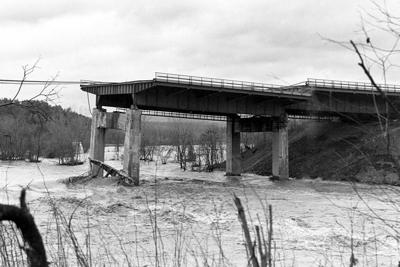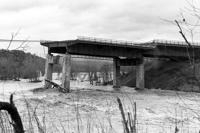Saturday’s limousine crash in Schoharie — described by national safety officials as the deadliest accident in the country since 2009 — has put the Capital Region in national news reports.
Other tragedies have involved multiple deaths, and also have resulted in national attention.
They are:
Lake George, 2005
Twenty people died on Sunday, Oct. 2, 2005, when the Ethan Allen, a glass-enclosed tour boat, capsized during a cruise on Lake George.
Forty-nine people — many of them elderly and using walkers — were aboard the 40-foot-long boat when it tipped over about 100 feet from the lake’s western shore. The boat sank to the bottom of the lake in water about 70 feet deep.
According to published reports, witnesses said passengers had not been wearing life preservers when the accident occurred at 3 p.m.; state law requires life vests be stored aboard tour boats, but not that they be worn at all times.
The National Transportation Safety Board concluded that the boat had too many passengers on board, even though the boat was certified by the Coast Guard for 50 passengers shortly after it was built in Connecticut during the 1960s.
Officials said the Ethan Allen had never been retested for stability and weight capacity after the addition of a metal-framed awning.
A monument to the men and women who lost their lives in Lake George is located along a walkway by the shore, near Amherst Street.
Fort Hunter, 1987
The collapse of a state Thruway bridge over the Schoharie Creek in Fort Hunter on Sunday, April 5, 1987, caused five vehicles to fall into the creek’s deep, surging waters. Ten people were killed in the catastrophe.
Officials said bridge supports had been weakened by melted snow and intense April rains.
Among the people who died, two were traveling west to a baby shower, one was driving home to Troy after a bowling tournament in Syracuse and two were on their way to Texas to see relatives.
Berlin, 1962
Nine people were killed in Berlin, a rural town in Rensselaer County, when a tanker truck loaded with propane gas overturned and exploded while rolling down Plank Hill Road on Wednesday, July 25, 1962.
According to Berlin historic reports, accident investigators said propane spewed from the ruptured tank, mixed with air and formed a cloud that spread rapidly over the area and eventually exploded.
Sixteen people were injured, nine homes were leveled and the 132-year-old First Baptist Church was destroyed.
North Blenheim, 1990
Two men were killed, six were injured and 14 homes were destroyed when a leaking liquid propane pipeline caused two explosions in North Blenheim, Schoharie County, on March 13, 1990.
Other tragedies have involved transportation, fire and explosions.
Northumberland, 1991
Five members of a Gansevoort family were killed Aug. 21, 1991, when the vehicle in which they were riding collided head-on with a pickup truck on Route 50 in Northumberland.
The driver of the truck was charged with driving while intoxicated. The victims included two parents and three small children.
Schenectady 2015
Four people died when fire heavily damaged an apartment building at 104 Jay St.
Officials said the alarm monitoring contract for the building had been canceled several months before the fire occurred on March 6, 2015. The system was not operable when the flames broke out.
The building manager, Jason Sacks, later pleaded guilty in Schenectady County Court to four counts of criminally negligent homicide and was sentenced to 1 to 3 years in state prison.
Schenectady, 1907
Three men were killed and nine people injured when two trolley cars collided in Schenectady on Sept. 2, 1907.
According to the Schenectady Gazette, the trolley cars — owned by the Schenectady Railway Co. — had left Schenectady for Albany at 8:40 p.m. and 8:45 p.m., respectively. The cars were moving on the Albany Road, now known as State Street.
The operator of the second car said he had been blinded by the light from a trolley car on the other track — where cars were heading to Schenectady from Albany. He said he did not see the car in front of him until he was only 100 feet away. He was unable to stop in time.
After impact, both cars rolled down a grade in the road and stopped in front of a private residence.
People inside the car, who were riding on Labor Day, panicked. A few women fainted. Riders pushed and shoved to reach the front of the car and some passengers were trampled.
Schenectady 1988
A Schenectady man was killed and two others were injured on May 19, 1988, when an explosion took place inside General Electric Building 273. The blast occurred when a pressure seal used to cure copper rods ruptured.
North Hudson 2014
A 14-year-old Quebec girl was killed and several others were injured when a Canadian tour bus carrying 56 people rolled over on the Adirondack Northway in North Hudson.
The bus had left Trois Rivieres during the early morning hours of July 18, 2014, and was heading to New York City when the rollover took place at 7:30 a.m.
Central Bridge, 1999
Fifteen students from Albany School #18 were injured — some seriously — when their school bus collided with a dump truck at the intersection of routes 7 and 30A in Central Bridge, Schoharie County.
Forty-four students were on the bus when the accident occurred on Oct. 21, 1999. They were on a field trip to a pumpkin patch in Schoharie.
At the time, the accident was regarded as one of the worst school bus accidents ever in the Capital Region. All passengers were sent to different hospitals.
West Glenville, 1920
A train accident occurred in West Glenville, just west of Scotia, in the pre-dawn hours of June 9, 1920. Eighteen people were killed.
Shortly after 1 a.m., a tremendous explosion was heard throughout the area of Clute’s Crossing as eastbound New York Central Express No. 34 plowed into Accommodation No. 28, killing more than a dozen persons outright and injuring scores of others.
As the accident was reconstructed by a subsequent investigation, the accommodation (or sleeping car train) left Syracuse perhaps eight minutes ahead of the express. The latter was late and was trying to make up time as it neared the Glenville crossings of Rector’s, Clute’s and Hutchinson’s (at the west end of the former Scotia Navy Depot).
Train No. 28 had stopped for some reason near Clute’s Crossing, where Barhydt and Vly Roads meet. The stop signals were turned on farther west of the crossings.
The engineer on the No. 34 did not see the signals and his speeding train crashed into the back of the train of sleeping cars.
All through the night and after dawn, rescuers worked among the wreckage of shattered wood and twisted metal, bringing out dead and injured and giving first aid. Most of the passengers were from the western part of the state, New York City and New England. Because of the hour, most of those aboard had been sleeping when the accident happened.
Relief trains brought doctors and nurses to the scene and took the wounded to the city’s railroad station, where police cars and ambulances transported them to Ellis Hospital. The hospital was put on emergency alert shortly before 1:30 a.m. and its surgical teams worked through the morning to save lives.
It would be announced later that, in all, 18 persons died in the crash and about 60 had been injured.
Contact Gazette reporter Jeff Wilkin at 518-395-3124 or at wilkin@dailygazette.com.









